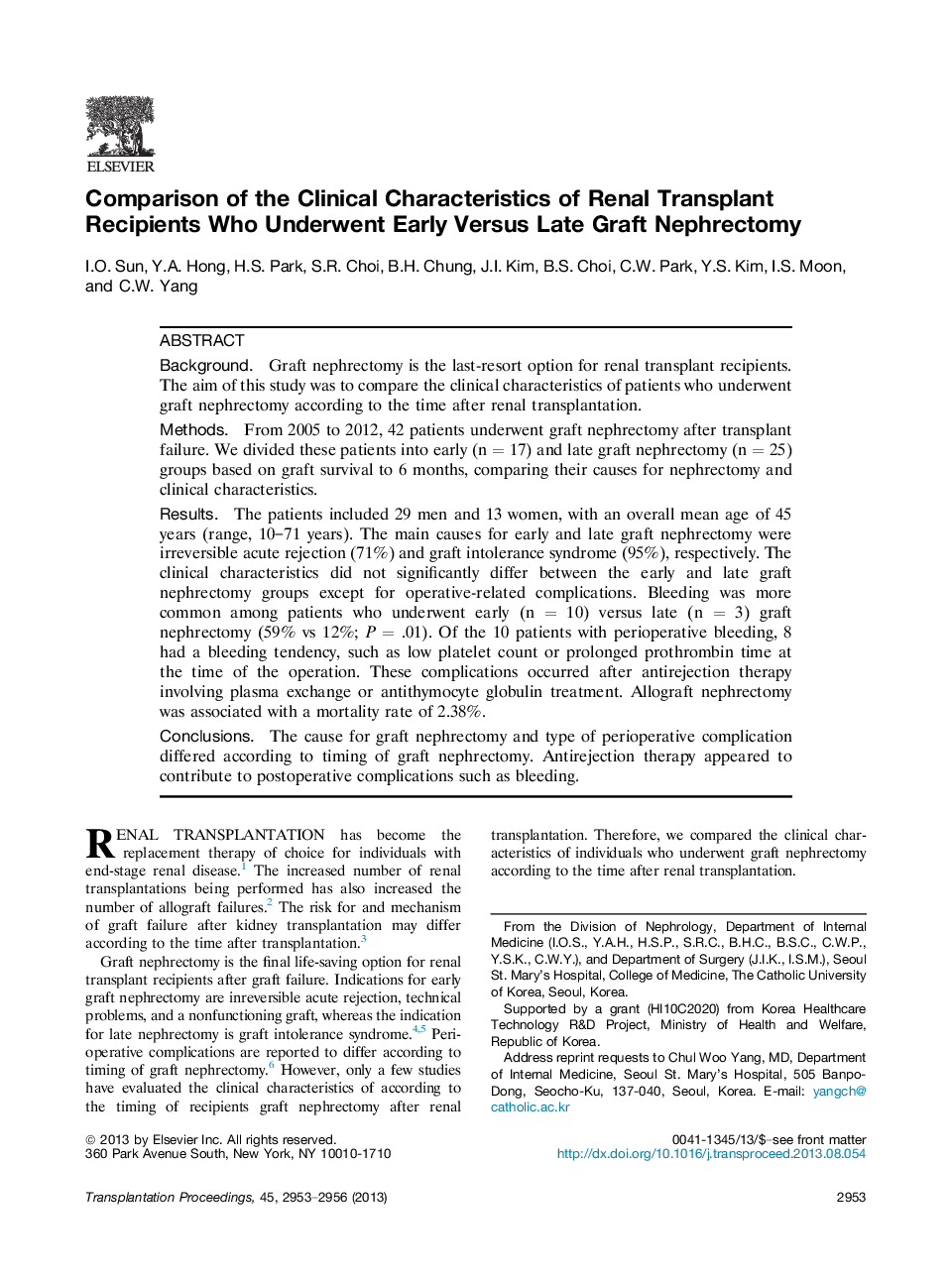| Article ID | Journal | Published Year | Pages | File Type |
|---|---|---|---|---|
| 6249909 | Transplantation Proceedings | 2013 | 4 Pages |
BackgroundGraft nephrectomy is the last-resort option for renal transplant recipients. The aim of this study was to compare the clinical characteristics of patients who underwent graft nephrectomy according to the time after renal transplantation.MethodsFrom 2005 to 2012, 42 patients underwent graft nephrectomy after transplant failure. We divided these patients into early (n = 17) and late graft nephrectomy (n = 25) groups based on graft survival to 6 months, comparing their causes for nephrectomy and clinical characteristics.ResultsThe patients included 29 men and 13 women, with an overall mean age of 45 years (range, 10-71 years). The main causes for early and late graft nephrectomy were irreversible acute rejection (71%) and graft intolerance syndrome (95%), respectively. The clinical characteristics did not significantly differ between the early and late graft nephrectomy groups except for operative-related complications. Bleeding was more common among patients who underwent early (n = 10) versus late (n = 3) graft nephrectomy (59% vs 12%; P = .01). Of the 10 patients with perioperative bleeding, 8 had a bleeding tendency, such as low platelet count or prolonged prothrombin time at the time of the operation. These complications occurred after antirejection therapy involving plasma exchange or antithymocyte globulin treatment. Allograft nephrectomy was associated with a mortality rate of 2.38%.ConclusionsThe cause for graft nephrectomy and type of perioperative complication differed according to timing of graft nephrectomy. Antirejection therapy appeared to contribute to postoperative complications such as bleeding.
